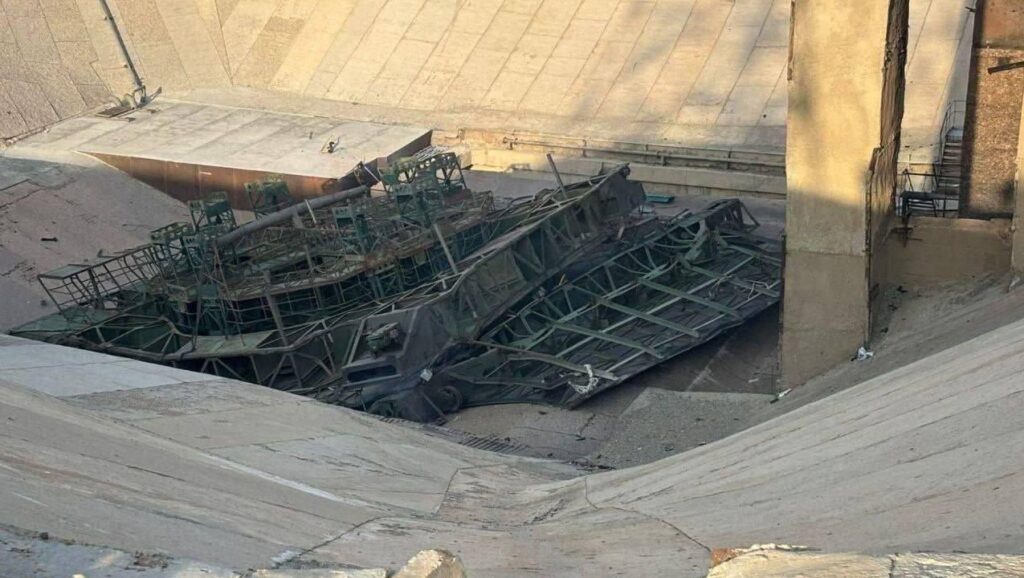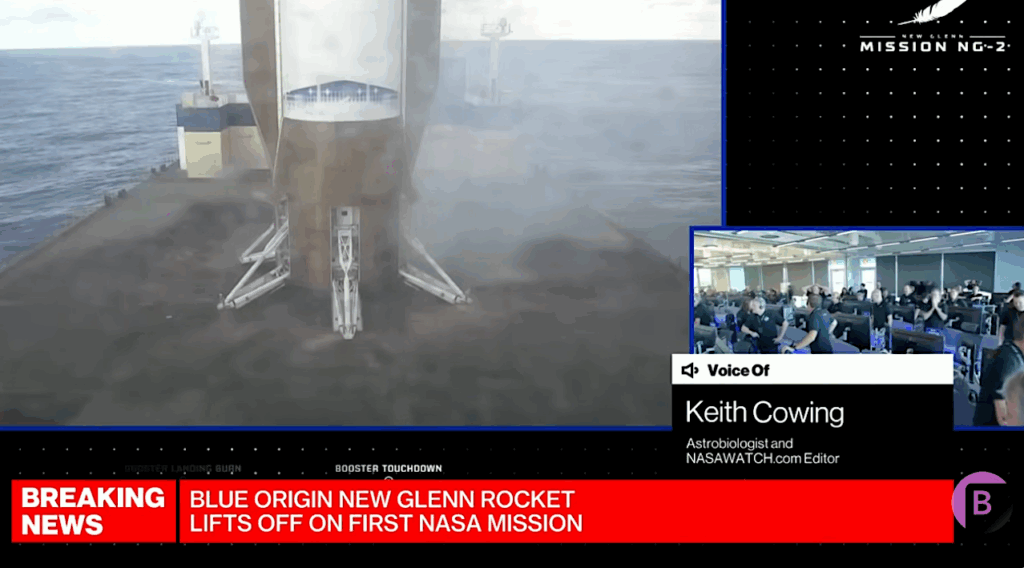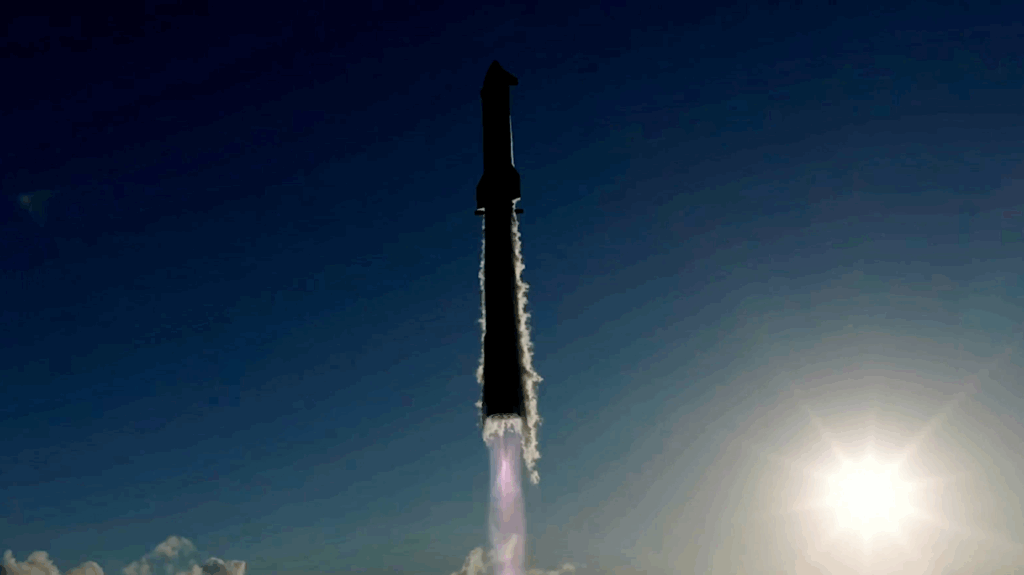Bigelow BEAM Fails To Inflate, Expand, Etc. (Update)

Bigelow Module Fails First Expansion Attempt
“NASA is working closely with Bigelow Aerospace to understand why its module did not fully expand today as planned. Engineers are meeting at the Johnson Space Center in Houston to discuss a path forward for the Bigelow Expandable Activity Module (BEAM).”
Packing for space flattened NASA’s Space Hotel, New Scientist
“The Bigelow Expandable Activity Module, or BEAM, was installed on the space station on 16 April and was supposed to be inflated on Thursday. But like a stubborn air mattress that stays flat, folds in the soft fabric kept it from expanding even as astronaut Jeff Williams tried to pump in air. In a 27 May teleconference, representatives from NASA and Bigelow Aerospace discussed what went wrong. “We went through a sequence, stepping up the pressure,” said NASA’s Jason Crusan. After some initial growth, the habitat stopped expanding even as pressure built up. “We ran into higher forces than our models predicted,” he said.”









Poor Bigelow module. It is obviously a case of performance anxiety.
Space is really really cold. Just sayin’.
Since people don’t say it enough, I will.
Failure is good. You can’t learn from experience without trying to do new things. Failure is the proof that you are pushing the limits. If you never fail, you aren’t trying hard enough.
Looks like the strap furthest from the CBM might not have released completely. Might need to add some cutting tools to the list of things needed for the next EVA.
Presumably there is a mechanism for reducing the internal pressure. Otherwise they probably won’t let an EVA near it, last thing they want is to cut the strap and have it deploy rapidly.
If there’s a mechanism to reduce, it’s likely (the gas is just air) a little release valve outside the hatch to the station, vs venting it to space (I mean, how is equalization done with other visiting “containers of air” like Dragon, Cygnus, Progress, etc.?). Also,IIRC, reducing the pressure won’t make the BEAM fold back up — this is a one-way deployment system, so it’ll stay looking the way it is now, until the expansion resumes.
Good they tested this on the space station. If this happened to their first BA-330 (which will likely be free-floating) they would be real hosed.
I’m not sure. Skylab was a stand-alone station and it experienced a major deployment problem (to put it mildly.) They managed to fix that.
Yeah, but if I recall correctly, they were able to dock with and enter Skylab. Working on a trussed-up B-330 would be an adventure.
Good point. Can you do EVA work from a Dragon 2? The top hatch may be too narrow and I don’t know what sort of support equipment is normally inside.
The top hatch is actually very wide.
That depends on your standards. I looked up the number when we had that discussion about science payloads on the Red Dragon. The clear, inside diameter was listed as 0.8 meters, if memory serves. I don’t know about current EVA equipment, but 0.8 m sounds tight for Shuttle-era suits. They ought to fit, but it would be close and snagging something on the way might be a concern.
Where did you find those numbers? I did a bit of searching, finding many illustrations but none dimensioned.
Looking at an elevation of Dragon, though, the docking berth looks like it’s perhaps 40% of the known 12′ width of the spacecraft. That would be more than 4.5′, surely sufficient for a space suit?
[Still stuck with feet and inches, I’m afraid].
This is probably a dead discussion after five days, but if you want to know about the hatch specs, I went to the source of all dubious information. Wikipedia says the Dragon 2 hatch conforms to the NASA Docking System standard. https://en.wikipedia.org/wi… has some diagrams of the current standard, and I found similar documents on NASA web pages with a google search (once I knew which acronym to search for…)
The outside diameter is 1.255 m, so that would be 4 feet and fairly close to your estimate. But the clear inner diameter (labeled “transfer passage” is 0.8 m or 31 inches.
Yes. It should also serve as a reminder that this stuff is not trivial.
As far as we know R2 model has not been upgraded to perform work in the vacuum of space and the work on the BEAM might require more than Dextre can perform.
Hopefully it was just packed a little too tight and if an EVA has to be done they can literally just kick it.
I wonder a bit about whether “failure” is really the appropriate word here. I watched the first hour or so of NASA’s live streaming coverage of its BEAM expansion efforts this morning and it looked more like hyper-caution and near-pathological risk aversion more than it looked like “failure” to me.
BEAM didn’t fail utterly to deploy under the feeble pressure of the tiny bits of gas NASA allowed to be admitted into it, it simply didn’t deploy by very much and what deployment it exhibited was all in the direction of increasing its diameter and not its length.
This seems entirely reasonable to me. With nothing but hard vacuum outside the ISS, the radial expansion of BEAM has nothing to impede it except the mechanical stiffness of its constituent materials and perhaps a stuck binding strap or two, but I saw no obvious evidence of the latter being in play. With respect to also lengthening as intended, BEAM faces the same inflation-retarding forces at work on its girth measurement, but also has mechanical friction of at least a minimal nature to overcome because its central axis is built to telescope out from a fully stowed to a fully deployed length.
The mingy bits of gas NASA allowed to be admitted into BEAM this morning pretty clearly aren’t sufficient to generate either much radial expansion or any lengthwise expansion against the static friction of its telescoping axial core.
I suspect that if NASA had just kept on admitting its teensy increments of station air into BEAM we would probably be seeing more obvious signs of expansion by now, maybe even the first bits of lengthening. In the end, I suspect BEAM will fully deploy and be fine, but the process now seems likely to be a protracted one with much intermediate pearl-clutching still to come from ISS Mission Control.
You did lay it on a little thick…but I pretty much agree with you. And I love the “pearl-clutching” bit. Write on!
Have you seen any documentation on the pressures allowed so far? Certainly they’d deduce leaks while monitoring how much gas had been released and the resultant expected pressures. Probably a lot to learn from that.
I certainly saw no failure. For Pete’s sake when we say bleeding edge this is exactly where the knife lay.
Exciting times indeed.
“pathological risk aversion”
That is now my absolute favorite description of NASA.
“feeble pressure”?! “tiny bits of gas”?! Have you even bothered to calculate how much force is being exerted by those “mingy bits of gas”? (Hint, it’s a very large force. You may even use a calculator if arithmetic overtaxes you.) But I’m sure all those fools at NASA don’t know nearly as much about how to do this as all you blog engineers.
Easy there, cowboy. Atmospheric pressures are non-obvious to ground lubbers. Your point made me think more about just how much force is involved, though; it’s non-trivial when there is vacuum on the other side.
In light of subsequent events, yeah, I guess I did know more about how to do this than those – okay, “fools” is not the word I would use; let’s just say “timid souls” – at NASA.
Such problems are not uncommon with initial attempts. It sounds like they will just need to work out a workaround.
They could be trying to avoid too much tension building up if they try to force it to expand, with the resulting instant release of tension causing vibration to the station and some torque on the connection between the module and Tranquility. Although probably that isn’t a huge concern since my guess is that before NASA would even consider allowing this to be attached to the station they determined that even the worst case “jack-in-the-box” scenario would not cause any damage or risk to the station.
So I think the most likely explanation for not continuing today is simply that after they get it inflated it’s just going to sit there doing nothing for two years to see how well it holds up. So there is no huge urgency to get it deployed. And as far as I know this will be their only opportunity with this module to observe how the inflation works compared to what they expected. Just from a data viewpoint, standing down gives them a chance to analyze what it has done so far, then make some predictions on what they think will happen next when they resume adding pressure. Probably that wasn’t the reason they stopped today but it’s a side benefit.
Too logical. The optics on this to the non-spacey people look like failure.
On the other hand scientific rationale for about anything is lost these days.
NASA did put Dextre through a few rounds of satellite servicing sims. And there was some cutting involved. Just saying.
The pic I saw of the cutting tool (wire cutters) had a couple of lights that look like they’d get in the way of trying to cut one of the straps.
Still, this is all speculation. Hopefully we’ll learn more at 2:00 p.m.
You say “speculation” like it’s a bad thing. 😉 I would imagine that they’d have to develop a new set of tools for that project. Looking forward to the update. Let the Space Drama continue.
All a moot point now that it is fully deployed. Looks like NASA was deliberately being cautious about inflating it slowly. I’m sure they were gathering lots of data along the way to pave the way for future deployments of “expandables”.
Yeah. I gathered from the web cast that they were adding pressure, waiting for it to lower as the Beam expanded, and then adding some more. Very exciting in a slow motion kinda way. Next speculation: Will NASA want Bigelow to dock their B-330 to the station like Mr. Big suggested? Care to speculate on that?
nah, fcrary’s still looking at Saturn…
As to Mr. Bigelow, don’t forget the stories that Mr. Musk tells about his early failures and very nearly running out of money. How frustrating to watch rocket stages playing bumper cars, after all. He has describes the feelings as being quite intense.
You forget Sir Richard Branson and Paul Allen. And then you have the billionaires supporting Planetary Resources, Larry Page, Ross Perot, Jr. and Charles Simonyl. And then there is Naveen Jain with Moon Express. So that is another six looking to move humanity beyond the Earth.
People underestimate the amount of force that is acting on the interior of the pressure vessel when it is inflated. Inflating to nominal station pressure, same as on earth, means there are 16 pounds being exerted on every square inch. On a 1 foot square, that is 144 x 16= 2300 pounds of force on every square foot. That is a lot of force and a lot of energy. I remember when we were inflating a module sized fabric structure in the pre-Transhab/lunar base study days and it popped. It was like a sonic boom. not to mention the rubber cement we used to try and slow the leak rate wound up sprayed on every structure in the high bay and we were finding it decades later.
The ISS Program says they are now striving to reduce the integration schedule, manpower and energy it takes to get payloads onboard ISS-good thing, too bad they didn’t start 20 years ago like other programs did. Unfortunately that reflects the arrogance of the managers and the program. But in order to reduce the work, ISS says they now take little to no ownership for success or failure of the payload. The burden is solely on Bigelow in this case.
Well, 14.5 psi if you mean one bar, but you are quite correct. I remember a friend who had just gotten a pressure gauge for an experiment he was working on. It was reading about 1 bar (100 kPa) and he asked me if that could be right. We were in Colorado and about 6000 feet above sea level, so he was sure the outside pressure was significantly lower than what his gauge was reading. I pointed at a window, and said the gauge was miscalibrated. When he asked why I was sure, I went through the same math you did. Even 0.1 psi is easily enough to break windows.
I wish we could just use the bar system. One bar (defined as 10 newtons per square cm) is almost precisely one standard atmosphere. 1 bar = 1000 milibars. I think the switch to pascals (the SI unit) was a mistake as it is less intuitive.
Agreed. Unfortionately my own experience has left my intuition calibrated to Torr. Too many damn units.
I’m still madly converting km to miles. Old dog, I know.
Don’t try. Converting and translating never give you an intuitive feel. I’ve been shifting to Celsius by just shifting my settings on wunderkind.com and learning by experience that 25 is short-sleave weather but 20 is a little chilly for that.
Easy for you to say 🙂
I try to keep up with stuff but admit standard units give me fits. You nailed the intuitive sensibility of lifelong exposure. and you are a scientist looking at numbers and units all day long; I can use my rusty Latin/Greek for botanical names but km/hr seems untouchable (not that I’ve given up, mind you).
Not so sure about that link, though?
Not so easy. I’ve spent years confusing myself over units because of this intuition issue. As well as having trouble with foreign languages for similar reasons. I’ve just recently discovered that it is easier to scrap past intuition, take the plunge, and rebuild my intuitionon back up from start with the new units.
The URL was wrong. It should have been for the Weather Underground (the meteorology not the political one.) Now that I’ve got an idea for learning languages, now I have to learn how to un-miss-correct what my smartphone tries to do. I’m sorry about the confusion.
I’m used to Fahrenheit for temperature… reminds me of a meme:
0F: really cold, 100F: really hot
0C: really cold, 100C: dead
0K: dead, 100K: dead
They might be able to re-purpose the Robotic Refuelling Mission Wire Cutter.
Because Michael Belfiore has already written one, “The Rocketreers: How a Visionary Band of Business Leaders, Engineers, and Pilots is Boldly Privatizing Space”
However its from 2009, so it does need updating but its a good foundation.
But my focus lately has been on research that links the major economic trends of the last few centuries to the economic opportunities of the Solar System as a guidebook to the potential of space. Just as the merchant adventurers of past created the modern world, this new generation of space merchant adventurers is creating the future.
Sadly most schools tend to teach about kings and generals, not the really important individuals like Richard Amerika, Sir Thomas Smythe, Edward Wingfield, or John Bullfinch although they really made America. And when they do teach about Prince Rupert or Prince Henry the Navigator they focus on their politics, not their business strategies. But the reality is if there is no wealth there is no progress and nothing of importance for the kings to squabble over.
BTW Robert Heinlein was a real student of history so that is why he wrote about business entrepreneurs opening space.
Probably really frustrating for Mr. Bidelow given that it was the delays caused by Mr. Musk’s company that delayed Mr. Bigelow’s project by a year.